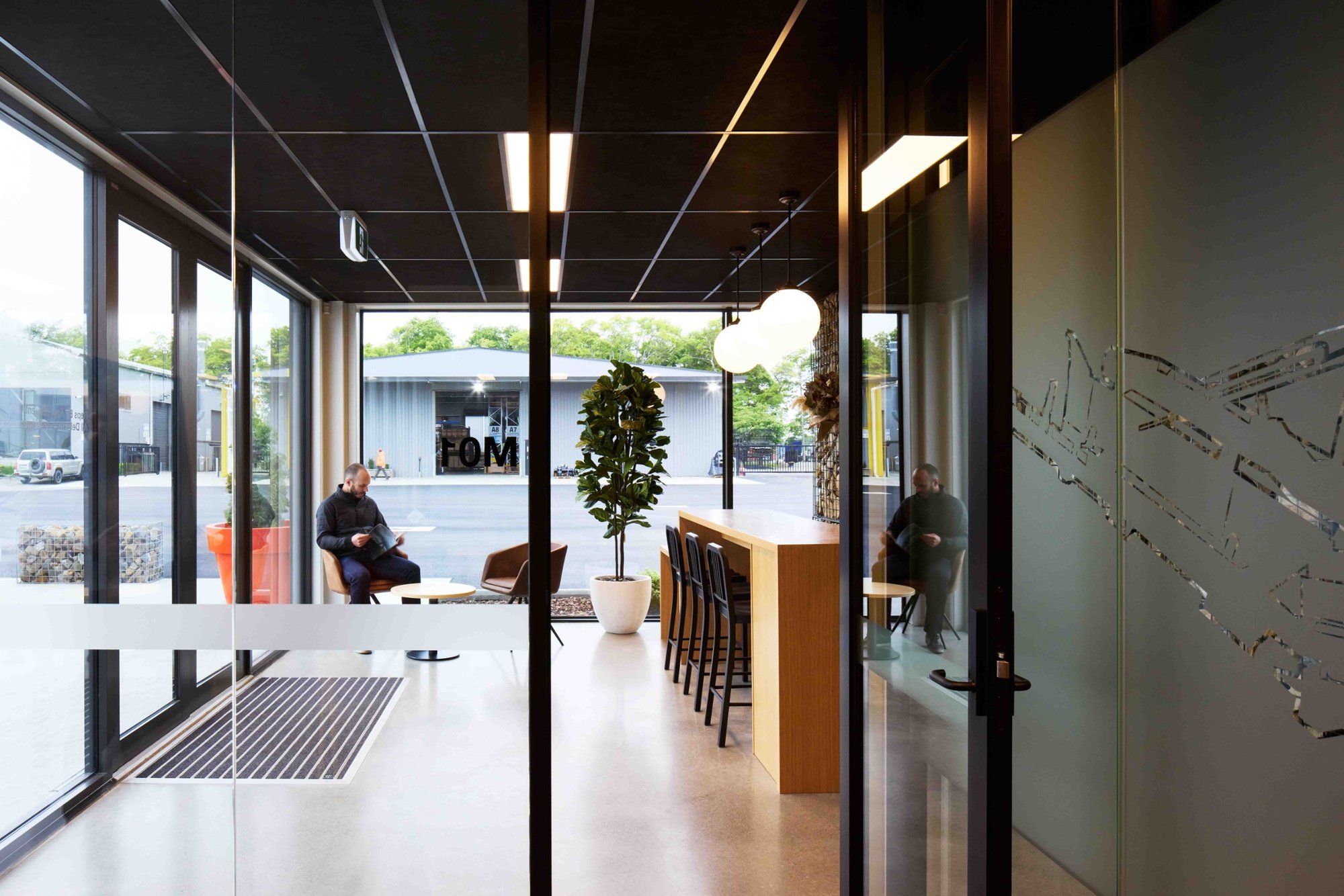6 considerations when selecting the height of your commercial building
We're often speaking with business owners and developers across New Zealand about their plans to build new commercial premises. One of the questions we’re commonly confronted with is: What is the best height to build my new commercial building?
This is certainly an important question to ask as the height of your building is very difficult to change once the building is installed, so the decision needs to be correct the first time.
So how does one know what height to choose? There are typically 6 questions we get our clients to answer to determine the ideal height for their new building, including:
- What is the main purpose of the building?
- Is there any specific machinery or items going into the building that will determine the height?
- What size doors are required for building access?
- What storage capacity do you require?
- Are there building height restrictions for your site?
- Is there better resale value in a building that is higher?
We walk you through each of these questions, what they mean, and how you can utilise them to determine the most appropriate height for your new building.
What is the main purpose of the building?
The building use is an important aspect to consider when choosing the height for your new building. Are you looking to use the building as a machinery or vehicle workshop, a processing or manufacturing facility, or a storage facility or warehouse? Whatever the intended use of the building, there is likely to be specific requirements to achieve your desired outcome.
Is there any specific machinery or items going into the building?
If there is specific machinery going within the building you may need to consider not only the height of the building to accommodate the machinery, but also the door opening sizes for installation.
A gantry crane is an example of machinery often included in the design for an industrial factory or heavy machinery workshop. If you are looking to include a gantry crane in your building design, consider the hook height, the maximum height the lifting hook on the gantry crane needs to be able to lift. This will often determine the building height to ensure correct clearances for the gantry crane.
Also, consider your roller door heights which may need to fit below your gantry runway beams - this may also be a key consideration for finalising your building height. To ensure you get this right you should confirm this with your building designer to discuss specifics such as the gantry size and options.
Other examples of specific machinery influencing the building height would be projects such as this hops processing shed which needed to fit a drying kiln.
/8871%20-%20A.jpg?width=1000&name=8871%20-%20A.jpg)
What height doors are required for building access?
For a machinery or vehicle workshop consider what height machinery is required to access the building. Often for a machinery workshop, the clearance height for the roller shutter doors are a critical dimension. Roller shutter doors are the most common type of doors used in commercial applications such as factories, workshops, and warehouses.
Full standard-legal road height in New Zealand is 4.3m high. If you are wanting to cater for full standard legal road height vehicles, we’d recommend allowing 4.5m door openings as a minimum. Door openings for frequent forklift movements are often recommended to be 6m high to save limiting boom height while travelling in and out of doors. This is what commonly determines the proposed building height. Typically, the building knee height would be at least 800mm higher than the roller shutter door height to allow for clearances of the door roll when open.
What storage capacity is required?
.png?width=800&name=XL%20%20Building%20height%20blog%20(1).png)
The storage capacity of a warehouse, distribution centre, or storage facility also factors into the building's size. When deciding on both the internal storage height and the building height, it can be helpful to know the NZ fire code segments for building storage heights include:
- Less than 3m storage.
- Less than 5m storage.
- Greater than 5m storage but with a height to the apex no greater than 8m and a total floor area of no more than 4,200m².
- High-level storage: storage of over 5m and over 8m to the building apex, and/or floor area greater than 4,200m².
Keep in mind that different storage heights can influence the amount of fire protection required in your building.
Even if the land area you have secured doesn’t necessarily restrict your proposed building’s footprint for storage, you should still consider the advantages of storage up to 5m (or higher). Depending on the product you’re looking to store there can be obvious efficiencies when product is stored higher and in closer proximity, such as less forklift travel distances and faster order fulfilment.
The knee height for a building with storage up to 5m would typically be around 6.5m high to allow for freeboard and the building structure above the storage height. A building height of 6.5m can comfortably allow for industrial-grade roller shutter doors of 5.5m which will cater for full standard road height vehicles and, in turn, increase the long term potential uses of the building.
One advantage of restricting your proposed building to 5m in storage height and no greater than 8m apex height is that you are likely to avoid the costly requirements of a fire sprinkler system. The fire report can be prepared using the C/AS2 code and saves the need for a more expensive, verified method fire report completed by a fire engineer.
Where land is at a premium, or if you are looking to maximise the storage within the building, it is worth considering the extra cost of building higher than 8m. This can significantly increase the volume of storage you can achieve, especially when maximising your racking or storage system. For instance, an extra 1.4m of height in a 3,500m² building is likely to add about 630 pallet spaces depending on the final racking layout. 10m - 11m building heights are common when looking to maximise storage capacity.
Are there building height restrictions for your site?
It’s always worth checking if your local council has any height restrictions on the property you are looking to develop and build on. There may be a blanket height restriction on the land zone your property is within which is found in your local council’s district plan. If however, your site is part of a greater subdivision development there may be restrictions noted in the subdivision resource consent that may include building height restrictions. Covenants set by the developer may also mention height restrictions and these can be found within the property sale and purchase agreement.
Is there better resale value in a building that is higher?
If you don't need the height for your proposed operation, it can be tempting to build a lower building to save money, experience tells us this is often a big regret. Adding extra bays is relatively simple - increasing the building height is not.
It’s wise to consider what building height would be attractive to potential buyers in the future, even if your mind isn’t initially on selling or leasing.
HOW MUCH DOES HEIGHT IMPACT THE COST OF A BUILDING?
Typically increasing height does not have an exponential impact on the price of the building as column profile sizes usually remain the same, there is just the extra cost of materials and labour/access equipment.
There are however times when increasing the height can start to increase costs significantly:
- If the building is relatively skinny but high. For example, a 40m building with a 10m high stud height would have almost the same portal design/steel sizes if it was 5.0 high. Conversely, an 18m wide building that is 10m high would almost certainly need a larger portal size than an 18m wide building that was only 5m high.
The above is partially applicable when you are in a SED (Specific Engineered Design) or extra high wind zone (areas such as close to Mt Taranaki for example) and if you are in one of the higher earthquake zones such as Wellington, Hawkes Bay, Palmerston North and Christchurch. - If you require full-height precast walls, large increases in height can result in panel thicknesses needing to increase, along with foundation and the structural steel frame, Again, this will be exacerbated if you are in a high earthquake area.
- Gantry cranes will add to the cost of height in your building as they add loading towards the top of the columns. Substantial increases in height can result in moving up steel column profile sizes. Most gantry crane buildings are around 8-9m high at the knee, but when they need to increase to 12-16m high this generally requires a lot more strength in the columns.
IN SUMMARY
In conclusion, there’s no one size fits all approach when you’re deciding on the height of your building. We recommend that you consider what is most important for your development or business and discuss this with your proposed building partner. This discussion is best had in the early planning phase of your project to ensure you get the best outcome for the long term.
XL Structural Steel specialises in providing large clear-span, structural steel buildings throughout New Zealand for industrial and commercial applications. We assist with the full design phase as well as consent applications to save our clients any hassle and to deliver the optimal building for them.
If you’re in the process of planning a new building you may also be interested in our article on how much a commercial or industrial building costs per m². Or please feel free to get in touch with the team directly by calling us on 0800 428 800 or sending us a message.



